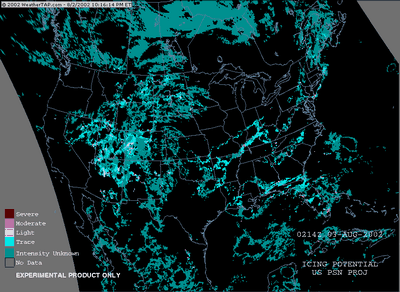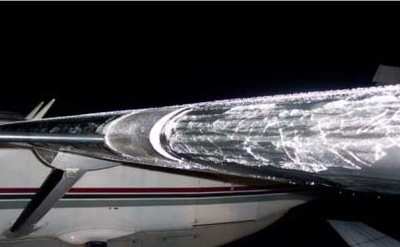Says Interpretation Of Known Icing In June 2006 Letter "Could
Be Misconstrued"
In response to concerns raised last year by the Aircraft Owners
and Pilots Association -- regarding an eyebrow-raising definition
of "known icing conditions" in updated FAA policy documents --
recently the agency submitted a revised draft of its proposed
language, and invited pilots and others concerned with the proposed
rule to comment.

As Aero-News reported, on
November 17, 2006, Luis Gutierrez, Director of Regulatory and
Certification Policy for AOPA, requested the FAA’s Office of
the Chief Counsel rescind a letter of interpretation issued by the
FAA’s Office of the Regional Counsel, Eastern Region,
regarding flight in known icing conditions. The letter of
interpretation, dated June 6, 2006, responded to a request by
Robert Miller that the FAA clarify when "known ice" exists for
purposes of enforcement action.
"The FAA recognizes that the term "known icing condition", the
term addressed in the June 2006 letter of interpretation, could be
misconstrued," the agency states. "Based on one’s
interpretation of the term, the FAA’s prohibitions against
flying into known icing conditions under certain circumstances
could either have the effect of placing severe constraints on when
individuals in aircraft without deicing equipment could fly or
allowing these individuals to fly in conditions where there is a
real risk of ice accretion with no means of removing the ice.
"Because the FAA has been asked to rescind the June 6, 2006
letter of interpretation, we have decided to publish a draft of our
response in the Federal Register and seek comment on it. Based upon
comments received in the docket, the FAA may decide to reevaluate
its position on known icing conditions."
In its draft response -- available for download at the FMI link
below -- the FAA says it has "replaced" its original letter with an
updated interpretation, which further clarifies the final decision
to fly into known icing conditions rests with the pilots'
interpretation of current regulations, and operating limitations
spelled out in the aircraft's approved AFM.
"Whether a pilot has operated into known icing conditions
contrary to any limitation will depend upon the information
available to the pilot, and his or her proper analysis of that
information in connection with the particular operation (e.g.,
route of flight, altitude, time of flight, airspeed, and aircraft
performance characteristics), in evaluating the risk of
encountering known icing conditions," the agency writes. "The FAA,
your own association, and other aviation- or weather-oriented
organizations offer considerable information on the phenomenon of
aircraft icing. Pilots are encouraged to use this information for a
greater appreciation of the risks that flying in potential icing
conditions can present."

Those wishing to comment have until May 3 to send in their
responses to the FAA.
 ANN's Daily Aero-Linx (05.02.24)
ANN's Daily Aero-Linx (05.02.24) ANN's Daily Aero-Term (05.02.24): Touchdown Zone Lighting
ANN's Daily Aero-Term (05.02.24): Touchdown Zone Lighting Aero-News: Quote of the Day (05.02.24)
Aero-News: Quote of the Day (05.02.24) ANN FAQ: Contributing To Aero-TV
ANN FAQ: Contributing To Aero-TV NTSB Final Report: Cirrus Design Corp SR20
NTSB Final Report: Cirrus Design Corp SR20




